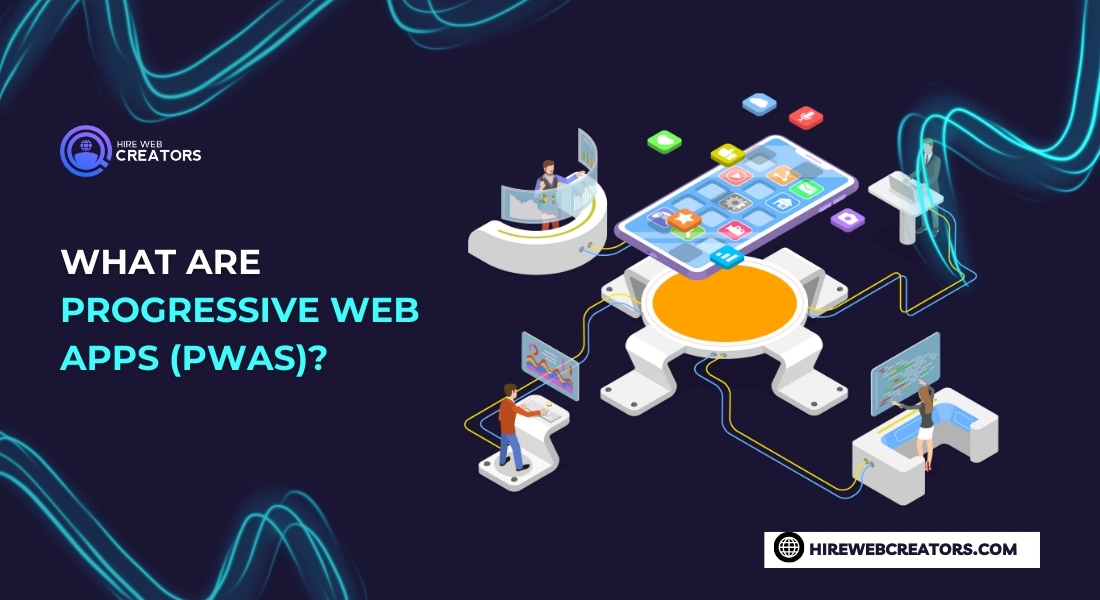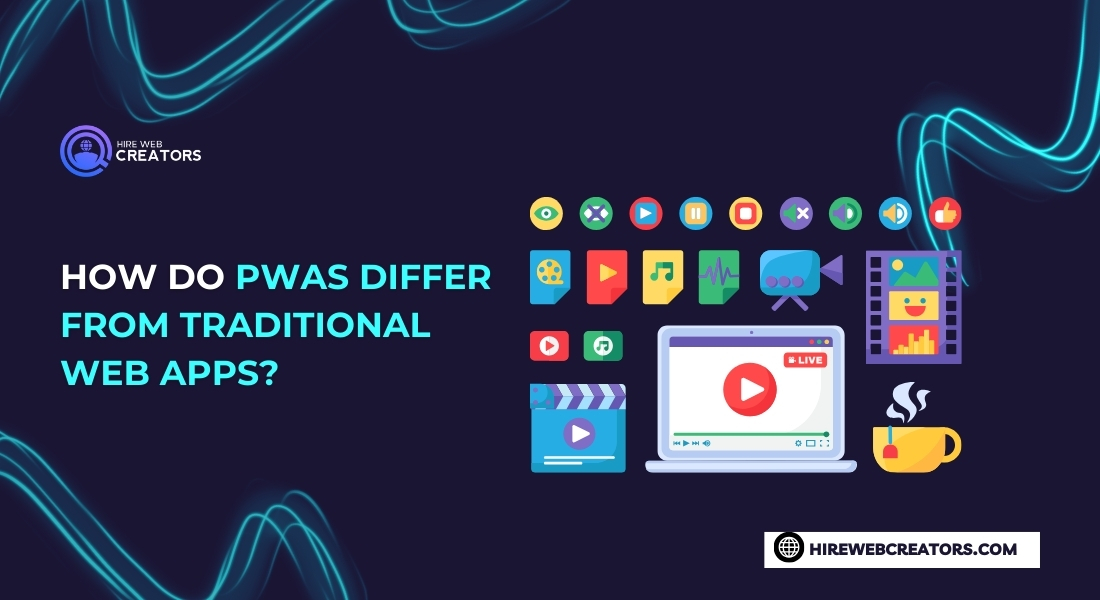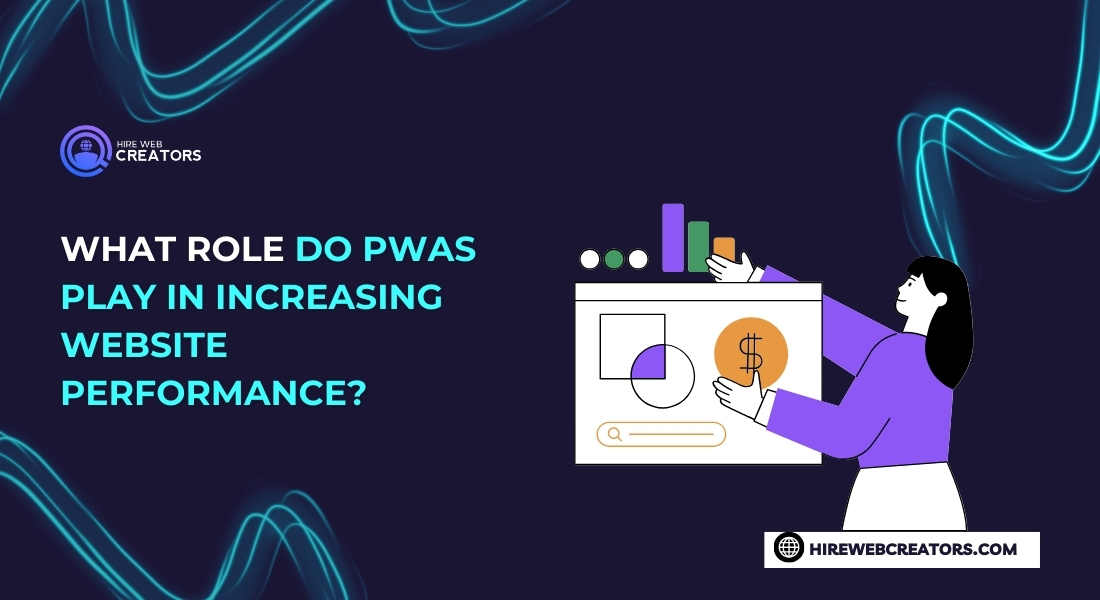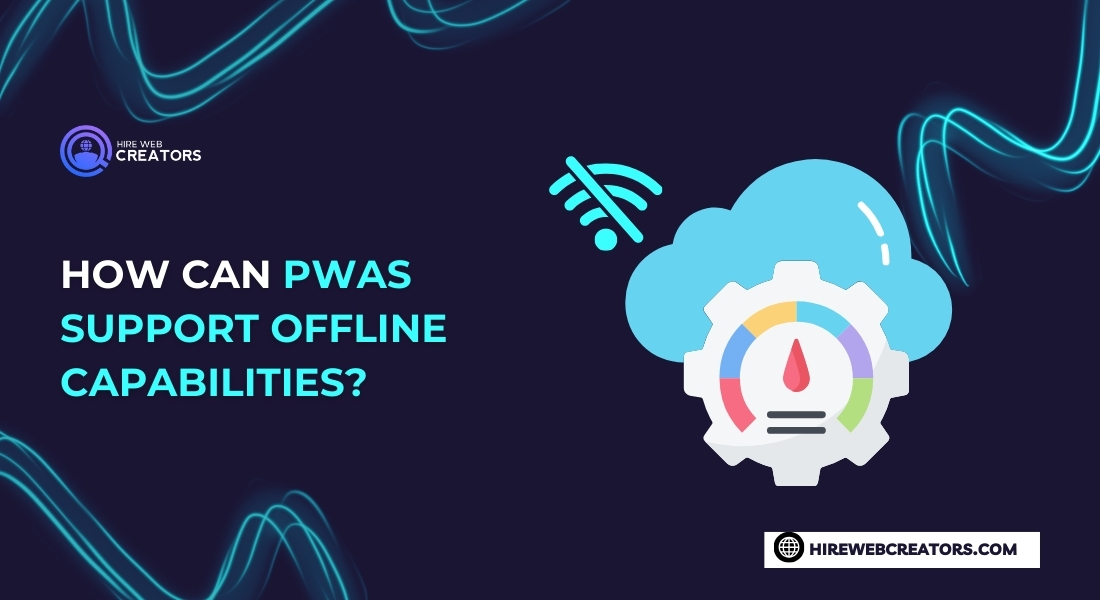

PWAs for B2B Websites: 12 Must-Have Features for Success!
Unlock the potential of PWAs for B2B websites! Discover how Progressive Web Apps enhance user experience, boost performance, and drive growth.
or any B2B company looking to survive in the digital space, innovative technologies are a must-have. Progressive Web Apps can change the way a business and its clients interact by providing native, app-like experiences right out of web browsers. Taking on the challenge to blend seamlessly the best features of the two worlds, PWAs become game-changers in improving user engagement and satisfaction for B2B websites.
By implementing PWAs, B2B businesses can expect vast improvements in performance, accessibility, and safety. This blog discusses a number of the more vital ways in which integrating PWAs into B2B sites can be beneficial by giving examples of how they not only smooth out the user experience but also drive long-term business growth. Join us as we uncover these compelling reasons that place PWAs at the forefront of your digital strategy.
What are Progressive Web Apps (PWAs)?
Progressive Web Apps (PWAs) represent a cutting-edge approach to web development, merging the functionalities of traditional websites and mobile applications to create an enhanced user experience. These applications are built using standard web technologies such as HTML, CSS, and JavaScript, allowing them to be accessed directly from web browsers without requiring installation from an app store. As a result, PWAs offer a seamless, engaging experience for users while maintaining the performance and reliability expected from native apps.

One of the defining characteristics of PWAs for B2B websites is their ability to work offline or on low-quality networks. This capability is made possible through service workers, which act as a proxy between the web application and the network. They cache important resources, allowing users to access content even when they have limited or no internet connectivity. Additionally, PWAs automatically update in the background, ensuring that users always interact with the latest version without needing to manually refresh or download updates.
Moreover, PWAs are designed with responsiveness and adaptability in mind, making them compatible with a wide range of devices, from desktops to smartphones. This flexibility is crucial for B2B websites, where users may access information from various platforms. By incorporating PWAs into their digital strategy, businesses can significantly improve engagement, retention, and conversion rates. In summary, PWAs for B2B websites not only enhance user experiences but also offer unique advantages that can drive growth and efficiency in a competitive market.
How do PWAs differ from traditional web apps?
PWAs for B2B websites distinguish themselves from traditional web applications by combining the best features of both web and mobile applications. While traditional web apps operate solely in a browser and require constant internet connectivity, PWAs can function offline and are capable of delivering app-like experiences through features such as push notifications, offline access, and home screen installation. This hybrid nature allows businesses to provide a more engaging user experience that closely mirrors that of native applications.

Another significant difference lies in the installation process. Traditional web apps often require users to navigate through a browser and bookmark the site, which can be a barrier to entry. PWAs simplify this process by enabling users to add the app directly to their home screen with a single click. Once installed, PWAs launch in a standalone window, free from the browser Chrome, offering a more immersive experience. This ease of access enhances user engagement on B2B websites, encouraging users to return frequently.
Security is also a key factor that sets PWAs apart from traditional web apps. PWAs are served over HTTPS, ensuring that all data exchanged between the user and the server is encrypted. This level of security is essential for B2B websites that handle sensitive information. By leveraging the inherent security features of PWAs, businesses can build trust with their users, making them more likely to engage with the platform and share valuable data. Ultimately, PWAs for B2B websites provide a superior alternative to traditional web applications, enhancing usability and security while driving better overall performance.
What are the benefits of using PWAs for B2B websites?
Implementing PWAs for B2B websites offers a range of benefits that can significantly enhance business performance. One of the primary advantages is improved load times. PWAs utilize caching strategies, enabling them to load quickly, even on slow networks. This speed is crucial for retaining users, as slow-loading pages can lead to high bounce rates and lost opportunities. Businesses that prioritize fast loading times through PWAs are more likely to keep visitors engaged and encourage them to explore further.

User engagement is another critical benefit of PWAs. By providing features such as push notifications and offline access, these applications keep users informed and connected, even when they are not actively browsing the website. This continuous engagement helps build a loyal customer base, increasing the chances of conversions. In a B2B context, where nurturing client relationships is essential, PWAs can serve as a valuable tool for maintaining communication and providing timely updates on products or services.
Cost efficiency is an often-overlooked benefit of PWAs for B2B websites. Developing a single PWA that works seamlessly across multiple platforms reduces the need for separate native applications. This not only streamlines development efforts but also lowers maintenance costs. As businesses look to optimize their budgets, adopting PWAs can result in significant savings while still delivering a high-quality user experience. In summary, the benefits of using PWAs for B2B websites extend beyond just functionality; they contribute to overall business success by enhancing user engagement and driving cost efficiencies.
How do PWAs improve user experience in B2B?
PWAs for B2B websites play a pivotal role in enhancing user experience by prioritizing speed, responsiveness, and engagement. The application’s ability to load quickly, even on unreliable networks, ensures that users can access the information they need without frustrating delays. This reliability is particularly important in B2B environments, where decision-makers require prompt access to data to inform their business choices. A seamless and fast experience with PWAs for B2B websites can significantly improve customer satisfaction and encourage repeat visits.
Another key aspect of user experience with PWAs for B2B websites is the mobile-first design approach that they embody. With a growing number of users accessing B2B websites through mobile devices, having a responsive layout that adapts to various screen sizes is essential. PWAs for B2B websites automatically adjust their design to provide an optimal viewing experience across all devices, ensuring that users can navigate and interact with content effortlessly. This adaptability fosters a sense of professionalism and attention to detail that users appreciate.
Interactivity is also enhanced through the use of features such as push notifications and home screen installation within PWAs for B2B websites. Users can receive timely updates and reminders about important events, new products, or special offers without needing to visit the website directly. This level of engagement keeps the business top-of-mind for users, facilitating ongoing communication and relationship-building. Overall, PWAs for B2B websites significantly improve the user experience by combining speed, adaptability, and interactivity, which collectively lead to higher satisfaction and increased conversion rates.
What role do PWAs play in increasing website performance?
PWAs for B2B websites significantly contribute to enhancing website performance through various innovative features and technologies. One of the main factors is their ability to provide instant loading times by utilizing service workers to cache essential resources. This means that users can access content almost immediately, regardless of their internet connection quality. Fast-loading websites not only improve user satisfaction but also positively impact search engine rankings, making PWAs an essential component of a successful digital strategy.

The implementation of background sync is another critical feature that boosts performance. PWAs can synchronize data in the background, ensuring that users always have the most up-to-date information without experiencing disruptions. This is especially beneficial for B2B applications that require real-time data access, such as inventory management systems or client dashboards. By ensuring seamless data synchronization, businesses can maintain operational efficiency and enhance overall user satisfaction.
Moreover, PWAs minimize the need for users to download and install heavy applications. By keeping resource consumption low, PWAs can function smoothly on a variety of devices without sacrificing performance. This lightweight approach is particularly advantageous for B2B websites, as it allows users to access crucial information quickly and efficiently. By prioritizing performance through the adoption of PWAs, businesses can create a more effective online presence that meets the needs of modern users.
How can PWAs enhance mobile accessibility for B2B businesses?
Mobile accessibility is a critical factor for B2B businesses, and PWAs for B2B websites significantly enhance this aspect by providing a seamless experience across devices. With the growing reliance on mobile devices for business operations, having a responsive web application that performs well on smartphones and tablets is essential. PWAs for B2B websites automatically adjust to different screen sizes and resolutions, ensuring that users can easily navigate and interact with content, regardless of their device. This adaptability fosters greater accessibility and convenience for users on the go.
PWAs for B2B websites also enable offline access, allowing users to engage with content without needing a continuous internet connection. By caching key resources and data, PWAs for B2B websites provide users with the ability to access essential features even in low or no connectivity situations. This capability is particularly beneficial for sales representatives or field agents who may need to access information while traveling or working in areas with limited internet access. The ability to function offline not only enhances user experience but also improves productivity.
Another vital feature of PWAs for B2B websites is their ease of installation. Users can add PWAs for B2B websites directly to their home screens without navigating app stores, streamlining the onboarding process. This frictionless installation encourages more users to engage with the application, increasing overall accessibility. For B2B businesses looking to reach a wider audience, PWAs for B2B websites represent a powerful solution for enhancing mobile accessibility and ensuring that users have the tools they need to succeed, no matter where they are.
What are the security advantages of implementing PWAs?
Security is a top concern for B2B websites, and implementing PWAs offers several advantages in this area. One of the primary benefits is that PWAs are served over HTTPS, which encrypts data exchanged between users and the server. This encryption ensures that sensitive information, such as customer data or financial transactions, remains protected from potential threats. For B2B businesses handling confidential information, this level of security is essential in building trust with clients and stakeholders.

Another important security feature of PWAs is their ability to provide automatic updates. By ensuring that users always have the latest version of the application, PWAs reduce the risk of vulnerabilities associated with outdated software. This proactive approach to security minimizes the chances of attacks targeting known exploits, allowing businesses to maintain a secure environment for their users. Regular updates can include security patches and improvements, ensuring ongoing protection against emerging threats.
Finally, the use of service workers enhances security by allowing developers to implement additional layers of control. For example, service workers can be configured to intercept network requests, enabling developers to enforce security policies and manage data caching more effectively. This level of customization allows B2B businesses to tailor their security measures to their specific needs and requirements. By prioritizing security in their digital strategy, businesses can confidently leverage PWAs while safeguarding their valuable data and maintaining user trust.
How can PWAs support offline capabilities?
One of the standout features of PWAs for B2B websites is their ability to function offline, providing users with access to essential information even without a stable internet connection. This capability is made possible through the use of service workers, which cache critical resources and data on the user’s device. By storing these assets locally, PWAs can continue to operate and deliver content to users when they are offline, significantly improving user experience.

The offline capabilities of PWAs are especially beneficial for B2B businesses that often operate in remote or variable connectivity environments. Sales teams, for instance, can access product catalogs, presentations, or client information without relying on a stable internet connection. This access not only enhances productivity but also ensures that users remain engaged with the business, even in challenging circumstances. The ability to provide offline access can lead to improved customer satisfaction and loyalty.
In addition, PWAs can intelligently manage data synchronization when a connection becomes available again. This means that any changes made while offline—such as updates to user profiles or order details—can be automatically synced with the server once the user is back online. This seamless transition reduces the risk of data loss and ensures that businesses maintain accurate records. By supporting offline capabilities, PWAs empower B2B websites to provide a more reliable and flexible experience for users, ultimately driving better engagement and performance.
What are the best practices for developing PWAs for B2B websites?
Developing PWAs for B2B websites requires careful consideration of several best practices to maximize their effectiveness and user experience. One key practice is to prioritize responsive design, ensuring that the application functions seamlessly across various devices and screen sizes. This adaptability is crucial for B2B users who may access information on desktops, tablets, or smartphones. A well-designed PWA provides an optimal experience, regardless of the device being used, making PWAs for B2B websites a crucial component of digital strategy.
Another essential best practice for PWAs for B2B websites is to focus on performance optimization. Fast loading times are critical for retaining users, so developers should implement strategies such as lazy loading, caching, and minimizing HTTP requests. By ensuring that PWAs load quickly and efficiently, businesses can enhance user satisfaction and reduce bounce rates. Regular performance testing and monitoring are also vital to identify and address any potential issues that may arise with PWAs for B2B websites.
Security should be a top priority throughout the development process of PWAs for B2B websites. Implementing HTTPS is a non-negotiable requirement, as it safeguards data exchanged between users and the server. Additionally, developers should regularly update the PWA to address any security vulnerabilities and ensure that users always have the latest features. By adhering to these best practices, B2B businesses can create robust, secure, and user-friendly PWAs for B2B websites that drive engagement and success.
How do PWAs impact SEO and visibility for B2B sites?
Progressive Web Apps (PWAs) can significantly impact SEO and visibility for B2B websites by enhancing user experience, increasing site speed, and improving accessibility. Here’s how:
Enhanced User Experience
PWAs offer a seamless, app-like experience on the web, which can lead to higher user engagement and lower bounce rates. Key features include:
- Offline Access: Users can access content even without an internet connection, reducing the risk of losing potential leads during connectivity issues.
- Fast Load Times: PWAs load quickly due to caching and efficient resource management, providing a smooth browsing experience.
- Responsive Design: PWAs work well on all devices, ensuring a consistent user experience across desktops, tablets, and smartphones.
These factors contribute to better user satisfaction, which is a critical ranking factor for search engines like Google. Websites that keep users engaged and provide a positive experience are likely to rank higher in search results.
Improved Site Speed
Site speed is a crucial element for SEO. PWAs are designed to be fast, thanks to:
- Service Workers: These scripts run in the background, caching assets and managing network requests, which significantly reduces load times.
- Efficient Resource Usage: By only loading necessary content and optimizing media files, PWAs ensure quick access to information.
Faster loading times lead to better user retention and lower bounce rates, both of which positively influence search engine rankings.
Increased Accessibility and Indexability
PWAs are built with modern web technologies that enhance their accessibility and indexability by search engines:
- HTTPS: PWAs are served over HTTPS, ensuring secure and reliable data transmission. Search engines favor secure websites, boosting their rankings.
- Structured Data: Implementing structured data in PWAs helps search engines understand the content better, leading to improved indexing and visibility.
- Mobile-First Indexing: With Google’s mobile-first indexing, PWAs’ responsive and mobile-friendly nature ensures they perform well on mobile search results.
These elements make it easier for search engines to crawl, index, and rank PWA-enabled B2B websites, enhancing their visibility in search results.
SEO Best Practices for PWAs
To fully leverage the SEO benefits of PWAs, consider the following best practices:
- Ensure Proper Metadata: Use relevant meta titles, descriptions, and keywords to help search engines understand your content.
- Optimize Content: Regularly update and optimize your content for relevant keywords and user intent.
- Implement Analytics: Use tools like Google Analytics to monitor user behavior and make data-driven decisions to improve site performance.
By integrating these practices, B2B websites can maximize the SEO advantages provided by PWAs, leading to increased visibility, higher search rankings, and ultimately, more business opportunities.
Conclusion, Incorporating Progressive Web Apps (PWAs) for B2B websites offers a transformative approach to enhancing user experience and driving business growth. By leveraging the unique capabilities of PWAs—such as offline access, fast loading times, and mobile responsiveness—B2B businesses can provide their clients with seamless and engaging interactions. The ability to function efficiently across various devices not only increases accessibility but also fosters customer loyalty, as users can access crucial information whenever and wherever they need it. As businesses continue to embrace digital transformation, PWAs stand out as a vital component of a forward-thinking strategy.
The numerous benefits of PWAs extend beyond user experience, influencing performance, security, and overall operational efficiency. With features that prioritize data protection and streamline access to essential resources, PWAs can significantly enhance the performance of B2B websites. As organizations look to differentiate themselves in a competitive marketplace, adopting PWAs represents a strategic investment in technology that can yield substantial returns. By embracing this innovative approach, B2B businesses can not only meet the demands of today’s users but also position themselves for sustained success in the future.
